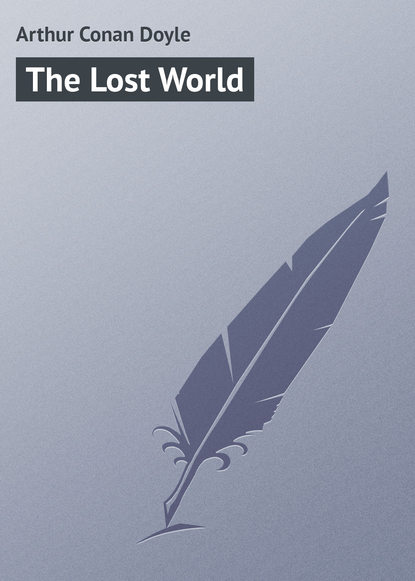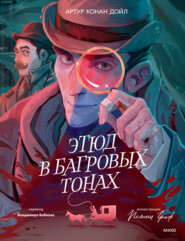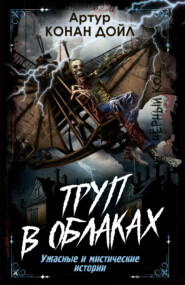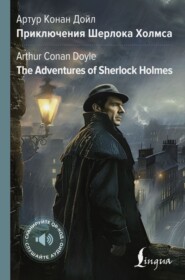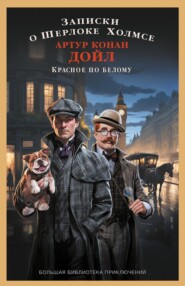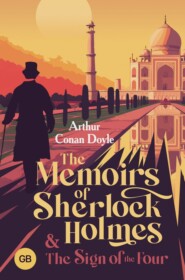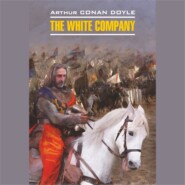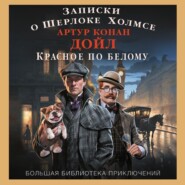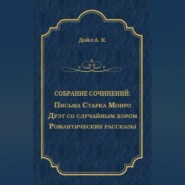По всем вопросам обращайтесь на: info@litportal.ru
(©) 2003-2025.
✖
The Lost World
Настройки чтения
Размер шрифта
Высота строк
Поля
"The man's knapsack lay beside the couch, and I examined the contents. His name was written upon a tab within it – Maple White, Lake Avenue, Detroit, Michigan. It is a name to which I am prepared always to lift my hat. It is not too much to say that it will rank level with my own when the final credit of this business comes to be apportioned.
"From the contents of the knapsack it was evident that this man had been an artist and poet in search of effects. There were scraps of verse. I do not profess to be a judge of such things, but they appeared to me to be singularly wanting in merit. There were also some rather commonplace pictures of river scenery, a paint-box, a box of colored chalks, some brushes, that curved bone which lies upon my inkstand, a volume of Baxter's `Moths and Butterflies,' a cheap revolver, and a few cartridges. Of personal equipment he either had none or he had lost it in his journey. Such were the total effects of this strange American Bohemian.
"I was turning away from him when I observed that something projected from the front of his ragged jacket. It was this sketch-book, which was as dilapidated then as you see it now. Indeed, I can assure you that a first folio of Shakespeare could not be treated with greater reverence than this relic has been since it came into my possession. I hand it to you now, and I ask you to take it page by page and to examine the contents."
He helped himself to a cigar and leaned back with a fiercely critical pair of eyes, taking note of the effect which this document would produce.
I had opened the volume with some expectation of a revelation, though of what nature I could not imagine. The first page was disappointing, however, as it contained nothing but the picture of a very fat man in a pea-jacket, with the legend, "Jimmy Colver on the Mail-boat," written beneath it. There followed several pages which were filled with small sketches of Indians and their ways. Then came a picture of a cheerful and corpulent ecclesiastic in a shovel hat, sitting opposite a very thin European, and the inscription: "Lunch with Fra Cristofero at Rosario." Studies of women and babies accounted for several more pages, and then there was an unbroken series of animal drawings with such explanations as "Manatee upon Sandbank," "Turtles and Their Eggs," "Black Ajouti under a Miriti Palm" – the matter disclosing some sort of pig-like animal; and finally came a double page of studies of long-snouted and very unpleasant saurians. I could make nothing of it, and said so to the Professor.
"Surely these are only crocodiles?"
"Alligators! Alligators! There is hardly such a thing as a true crocodile in South America. The distinction between them – "
"I meant that I could see nothing unusual – nothing to justify what you have said."
He smiled serenely.
"Try the next page," said he.
I was still unable to sympathize. It was a full-page sketch of a landscape roughly tinted in color – the kind of painting which an open-air artist takes as a guide to a future more elaborate effort. There was a pale-green foreground of feathery vegetation, which sloped upwards and ended in a line of cliffs dark red in color, and curiously ribbed like some basaltic formations which I have seen. They extended in an unbroken wall right across the background. At one point was an isolated pyramidal rock, crowned by a great tree, which appeared to be separated by a cleft from the main crag. Behind it all, a blue tropical sky. A thin green line of vegetation fringed the summit of the ruddy cliff.
"Well?" he asked.
"It is no doubt a curious formation," said I "but I am not geologist enough to say that it is wonderful."
"Wonderful!" he repeated. "It is unique. It is incredible. No one on earth has ever dreamed of such a possibility. Now the next."
I turned it over, and gave an exclamation of surprise. There was a full-page picture of the most extraordinary creature that I had ever seen. It was the wild dream of an opium smoker, a vision of delirium. The head was like that of a fowl, the body that of a bloated lizard, the trailing tail was furnished with upward-turned spikes, and the curved back was edged with a high serrated fringe, which looked like a dozen cocks' wattles placed behind each other. In front of this creature was an absurd mannikin, or dwarf, in human form, who stood staring at it.
"Well, what do you think of that?" cried the Professor, rubbing his hands with an air of triumph.
"It is monstrous – grotesque."
"But what made him draw such an animal?"
"Trade gin, I should think."
"Oh, that's the best explanation you can give, is it?"
"Well, sir, what is yours?"
"The obvious one that the creature exists. That is actually sketched from the life."
I should have laughed only that I had a vision of our doing another Catharine-wheel down the passage.
"No doubt," said I, "no doubt," as one humors an imbecile. "I confess, however," I added, "that this tiny human figure puzzles me. If it were an Indian we could set it down as evidence of some pigmy race in America, but it appears to be a European in a sun-hat."
The Professor snorted like an angry buffalo. "You really touch the limit," said he. "You enlarge my view of the possible. Cerebral paresis! Mental inertia! Wonderful!"
He was too absurd to make me angry. Indeed, it was a waste of energy, for if you were going to be angry with this man you would be angry all the time. I contented myself with smiling wearily. "It struck me that the man was small," said I.
"Look here!" he cried, leaning forward and dabbing a great hairy sausage of a finger on to the picture. "You see that plant behind the animal; I suppose you thought it was a dandelion or a Brussels sprout – what? Well, it is a vegetable ivory palm, and they run to about fifty or sixty feet. Don't you see that the man is put in for a purpose? He couldn't really have stood in front of that brute and lived to draw it. He sketched himself in to give a scale of heights. He was, we will say, over five feet high. The tree is ten times bigger, which is what one would expect."
"Good heavens!" I cried. "Then you think the beast was – Why, Charing Cross station would hardly make a kennel for such a brute!"
"Apart from exaggeration, he is certainly a well-grown specimen," said the Professor, complacently.
"But," I cried, "surely the whole experience of the human race is not to be set aside on account of a single sketch" – I had turned over the leaves and ascertained that there was nothing more in the book – "a single sketch by a wandering American artist who may have done it under hashish, or in the delirium of fever, or simply in order to gratify a freakish imagination. You can't, as a man of science, defend such a position as that."
For answer the Professor took a book down from a shelf.
"This is an excellent monograph by my gifted friend, Ray Lankester!" said he. "There is an illustration here which would interest you. Ah, yes, here it is! The inscription beneath it runs: `Probable appearance in life of the Jurassic Dinosaur Stegosaurus. The hind leg alone is twice as tall as a full-grown man.' Well, what do you make of that?"
He handed me the open book. I started as I looked at the picture. In this reconstructed animal of a dead world there was certainly a very great resemblance to the sketch of the unknown artist.
"That is certainly remarkable," said I.
"But you won't admit that it is final?"
"Surely it might be a coincidence, or this American may have seen a picture of the kind and carried it in his memory. It would be likely to recur to a man in a delirium."
"Very good," said the Professor, indulgently; "we leave it at that. I will now ask you to look at this bone." He handed over the one which he had already described as part of the dead man's possessions. It was about six inches long, and thicker than my thumb, with some indications of dried cartilage at one end of it.
"To what known creature does that bone belong?" asked the Professor.
I examined it with care and tried to recall some half-forgotten knowledge.
"It might be a very thick human collar-bone," I said.
My companion waved his hand in contemptuous deprecation.
"The human collar-bone is curved. This is straight. There is a groove upon its surface showing that a great tendon played across it, which could not be the case with a clavicle."
"Then I must confess that I don't know what it is."
"You need not be ashamed to expose your ignorance, for I don't suppose the whole South Kensington staff could give a name to it." He took a little bone the size of a bean out of a pill-box. "So far as I am a judge this human bone is the analogue of the one which you hold in your hand. That will give you some idea of the size of the creature. You will observe from the cartilage that this is no fossil specimen, but recent. What do you say to that?"
"Surely in an elephant – "
He winced as if in pain.
"Don't! Don't talk of elephants in South America. Even in these days of Board schools – "
"Well, I interrupted, "any large South American animal – a tapir, for example."
"You may take it, young man, that I am versed in the elements of my business. This is not a conceivable bone either of a tapir or of any other creature known to zoology. It belongs to a very large, a very strong, and, by all analogy, a very fierce animal which exists upon the face of the earth, but has not yet come under the notice of science. You are still unconvinced?"
"I am at least deeply interested."





